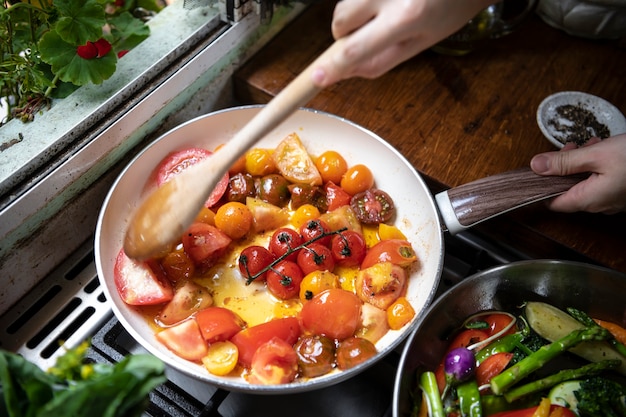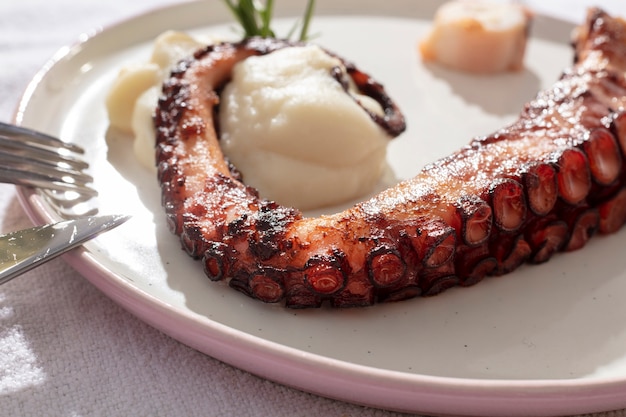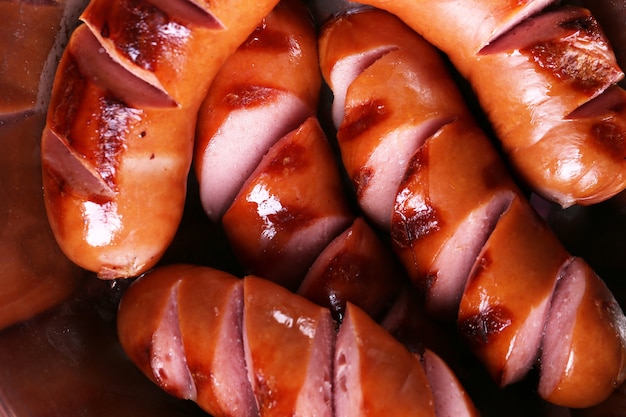(Part 1) The Bratwurst Basics: Getting to Know Your Sausage

Unveiling the World of Bratwurst
Bratwurst, as you probably know, is a type of German sausage. It's made with a blend of pork and sometimes beef, and it's seasoned with a symphony of spices, including caraway seeds, nutmeg, and marjoram. The result is a flavor that's both savory and aromatic, perfect for a casual BBQ or a more elaborate feast.But here’s the thing about bratwurst: they come in a whole range of varieties, each with its own unique flavor and texture. You’ve got your classic nuremberg bratwurst, which is super thin and skinless, perfect for frying or grilling. Then there's the thicker Thuringer bratwurst, usually grilled, and known for its hearty texture. And don't forget about the Bavarian Weisswurst, a white sausage made with veal and pork, traditionally eaten for breakfast.
For our purposes, we'll focus on the more common types of bratwurst that you'll likely find at your local butcher or supermarket. These are usually made with pork and beef and come in either natural or artificial casings.
The Importance of the Casing: Natural or Artificial?
The casing is the outer layer of the sausage, and it plays a crucial role in both the cooking process and the final texture. It comes in two main types: natural and artificial.natural casings are made from the intestines of animals. These casings are usually more porous and tend to give the sausage a more authentic flavor. They also tend to snap when they’re cooked, making them ideal for grilling, as they release the flavors trapped within.
Artificial casings, on the other hand, are made from cellulose or collagen. These casings are typically smoother and less porous, and they usually don't snap when cooked. This means they’re better for pan-frying or baking, as they’re more likely to stay intact, ensuring a neater presentation.
(Part 2) grilling bratwurst: The Classic Method

Setting the Stage for Grilling Success
First things first, you need to fire up your grill! I prefer to use a gas grill for convenience, but a charcoal grill will work just fine.Before you start grilling, make sure your grill is clean and preheated to medium heat. You want the grill grates to be nice and hot. A quick tip here: if you have a gas grill, make sure that one side of the grill is hotter than the other. This way, you can cook the bratwurst over the hotter side to sear them and then move them to the cooler side to finish cooking, resulting in a perfectly cooked sausage with a beautiful char.
Oh, and don’t forget to soak your bratwurst in cold water for 30 minutes before grilling. This helps to keep them juicy and prevents them from drying out. This is especially important for sausages with natural casings, which tend to be more prone to drying out.
Grilling Time: Mastering the Art of Heat
Now for the fun part!Place your bratwurst directly on the grill grates. You want to be careful not to overcrowd the grill, as this can lower the temperature and prevent them from getting a nice char. Give those sausages some space to breathe!
Close the lid and let the bratwurst cook for about 8-10 minutes, turning them every couple of minutes. This will help them cook evenly and develop that lovely crispy exterior.
Remember: You’re looking for a nice char on the outside and a juicy, tender interior. If you’re not sure if your bratwurst is cooked through, use a meat thermometer. You want the internal temperature to reach at least 160°F (71°C).
Finishing Touches: Taking Your Bratwurst to the Next Level
Once the bratwurst are cooked to your liking, they’re ready to be enjoyed!For a classic touch, try serving your bratwurst on a toasted bun with sauerkraut, mustard, and a sprinkle of chopped onion. You could also add some grilled peppers and onions for extra flavour.
And who could forget the beer? A cold pint of German lager goes down a treat with bratwurst. It complements the richness of the sausage beautifully.
(Part 3) Pan-Frying Bratwurst: A Quick and Easy Option

Setting Up Your Pan for Success
You’ll need a good, heavy-bottomed skillet for this method. And don’t forget to preheat it over medium heat.Add a tablespoon or two of oil to the skillet and let it get nice and hot. You’ll know it’s ready when the oil shimmers and starts to smoke slightly. This ensures the bratwurst will get a nice sear and a crispy exterior.
Frying Time: Achieving that Perfect Crispy Crust
Now, add your bratwurst to the skillet, making sure to give them some space. You don’t want to overcrowd the skillet, or they won’t cook evenly.Let the bratwurst cook for 5-7 minutes on each side, turning them every couple of minutes to ensure they’re browned all over. You’ll want to get a nice crispy crust on the outside while keeping the inside juicy and tender.
If you’re worried about the bratwurst sticking to the pan, you can add a splash of water to the skillet. This will help to create steam and make the sausages easier to flip. Just be careful not to add too much water, or the sausages will end up stewing instead of frying.
Finishing Touches: Elevate Your Pan-Fried Bratwurst
Once your bratwurst are cooked through, you can serve them with whatever sides you like. I often pair them with mashed potatoes, sauerkraut, or a simple green salad.And if you want to add some extra flavour, you can try deglazing the pan with a splash of beer or white wine. This will create a delicious sauce that you can drizzle over your bratwurst, adding a touch of richness and complexity to the dish.
(Part 4) Baking Bratwurst: A Hands-Off Approach
If you’re looking for a hands-off cooking method, baking is your best bet. It’s perfect for when you’re busy or have a lot of other things going on, and it produces a consistently cooked sausage with a crispy exterior.Setting Up Your Oven for Baking Excellence
First things first, preheat your oven to 375°F (190°C).You can bake bratwurst in a roasting pan or on a baking sheet. I prefer to use a baking sheet lined with parchment paper, as this makes for easy cleanup.
Baking Time: Letting the Oven Do the Work
Place your bratwurst on the baking sheet, making sure to give them some space. This will help them cook evenly and avoid sticking together.Bake the bratwurst for about 20-25 minutes, flipping them halfway through. You want them to be cooked through and have a nice golden brown crust.
If you’re concerned about the bratwurst drying out, you can add a splash of water to the bottom of the baking pan. This will help to create steam and keep the sausages moist. Just be sure to add the water before putting the bratwurst in the oven to avoid splattering.
Adding Extra Flavor: Taking Baking Beyond the Basics
You can also add some extra flavor to your baked bratwurst by adding some aromatics to the baking pan. Try adding some sliced onions, peppers, or even a few sprigs of rosemary. The heat of the oven will infuse the sausages with the flavors of these aromatics.(Part 5) Cooking Time: A Guide to perfect bratwurst
We’ve covered the basics of grilling, pan-frying, and baking bratwurst, but now you need to know how long to cook them for. It depends on the size and thickness of the bratwurst and the method you’re using.Here’s a table to guide you:
| Method | Size | Cooking Time |
|---|---|---|
| Grilling | Thin | 8-10 minutes |
| Grilling | Thick | 10-12 minutes |
| Pan-Frying | Thin | 5-7 minutes per side |
| Pan-Frying | Thick | 7-9 minutes per side |
| Baking | Thin | 20-25 minutes |
| Baking | Thick | 25-30 minutes |
Remember, these are just general guidelines. It’s always best to check your bratwurst with a meat thermometer to ensure they’re cooked through. You want the internal temperature to reach at least 160°F (71°C). This will ensure the sausage is safe to eat and won’t be undercooked.
(Part 6) Tips and Tricks for Perfect Bratwurst: Avoiding Common Mistakes
Over the years, I’ve learned a few tricks for making the perfect bratwurst. These tips are sure to elevate your bratwurst game and prevent some common cooking mishaps.Score Those Sausages: Unlocking Even Cooking
I always score my bratwurst before cooking them, as it helps them cook more evenly and allows the flavors to penetrate deeper. I just make a few shallow cuts across the sausage, about ?? inch apart. This prevents the sausage from bursting and ensures even cooking throughout.Get Creative with Flavour: Adding a Personal Touch
Don’t be afraid to get creative with your seasonings! I often add a pinch of smoked paprika or a sprinkle of chili flakes to my bratwurst before cooking. This adds a smoky or spicy dimension to the classic flavor profile of the sausage.Don’t Overcook! The Key to Tenderness
One of the biggest mistakes people make is overcooking their bratwurst. Overcooked bratwurst are dry and tough, so make sure to cook them only until they’re cooked through. Keep an eye on them, and don’t be afraid to undercook them slightly – you can always cook them a little longer if necessary.Let Them Rest! The Secret to juicy sausages
Like any good piece of meat, bratwurst benefit from resting for a few minutes after they’re cooked. This allows the juices to redistribute, making them more tender and flavorful. Cover the sausages loosely with foil and let them rest for 5-10 minutes before serving.(Part 7) Bratwurst Beyond the Bun: Expanding Your Sausage Horizons
Don’t limit yourself to just serving your bratwurst in buns. There’s a whole world of delicious possibilities waiting to be explored!Bratwurst Skewers: A Fun and Flavorful Option
I often make bratwurst skewers by alternating chunks of bratwurst with bell peppers, onions, and mushrooms. These are great for grilling or baking, and they offer a visually appealing and flavorful way to enjoy bratwurst.Bratwurst Pasta: A Hearty and Satisfying Dish
You can also add cooked bratwurst to your pasta dishes for a hearty and flavorful meal. Chop the bratwurst into bite-sized pieces and add them to your favorite pasta sauce, or use them as a topping for a simple pasta salad.Bratwurst Soup: A Comforting and Flavorful Meal
If you’re feeling adventurous, try adding some chopped bratwurst to your favourite soup recipe. This adds a hearty texture and a rich, savory flavor to your soup.(Part 8) FAQs: Addressing Common Questions
Let’s address a few frequently asked questions about bratwurst.1. Can you freeze bratwurst?
Yes, you can freeze bratwurst. Just wrap them tightly in plastic wrap or aluminum foil and freeze for up to 2 months.To defrost, simply transfer them to the refrigerator overnight. Once thawed, you can cook them as usual. Frozen bratwurst are great for meal prepping or for those times when you need a quick and easy dinner.
2. How do you reheat bratwurst?
You can reheat bratwurst in the oven, microwave, or on the stovetop.If you’re reheating them in the oven, preheat the oven to 350°F (175°C). Place the bratwurst on a baking sheet and bake for about 10-15 minutes, or until heated through.
To reheat in the microwave, place the bratwurst on a microwave-safe plate and heat on high for about 1-2 minutes, or until heated through. This is a quick and convenient option, but it may not produce the same crispy texture as other reheating methods.
To reheat on the stovetop, heat a tablespoon of oil in a skillet over medium heat. Add the bratwurst to the skillet and cook for about 5-7 minutes, or until heated through. This method will give you a crispy texture and allows you to add additional flavors by deglazing the pan with beer or wine.
3. What are some good sides to serve with bratwurst?
Bratwurst pair well with a variety of sides. Here are a few ideas:- Sauerkraut: A classic pairing that adds a tangy and slightly sweet element to the dish.
- Mashed potatoes: A creamy and comforting side that complements the savory flavors of bratwurst perfectly.
- German potato salad: A tangy and flavorful potato salad that is a traditional accompaniment to bratwurst.
- Grilled onions and peppers: A flavorful and colorful side that adds a sweet and smoky element to the dish.
- Green salad: A fresh and refreshing side that balances out the richness of the bratwurst.
4. What kind of mustard should you use with bratwurst?
There are many different types of mustard that you can use with bratwurst. I personally love a good German mustard, like a sweet and spicy mustard or a stone ground mustard.But you can also get creative with other types of mustard, like Dijon mustard, honey mustard, or even horseradish mustard. It’s really up to your personal preference!
5. Can you make your own bratwurst?
Absolutely! Making your own bratwurst is a fun and rewarding experience.There are plenty of recipes available online, and you can customize them to your liking. Just make sure to use high-quality meat and seasonings for the best results.
And there you have it, my friend! Now you’ve got all the knowledge you need to cook up a storm with bratwurst. So fire up that grill, get your hands dirty, and enjoy! Remember, the key is to have fun and experiment.Everyone is watching

Corn on the Cob: The Ultimate Guide to Perfectly Cooked Ears
Healthy MealsAh, corn on the cob. Just the name evokes images of sunny days, barbecues, and that sweet, juicy flavour that ...

Scallops: The Ultimate Guide to Perfect Cooking
Healthy MealsAh, scallops. Those delicate, sweet, and utterly delicious morsels of the sea. They hold a special place in my...

Spaghetti Squash: The Ultimate Guide to Cooking and Serving
Healthy MealsRemember that time you saw spaghetti squash at the supermarket, looking all bumpy and strange, and thought, "W...

Salmon Cooking Times: Perfect Guide for Every Recipe
Healthy MealsLet me tell you, cooking salmon is an art form. It's all about getting that perfect balance: juicy and tender,...

Ham Cooking Time: How Long to Bake, Smoke, or Boil a Delicious Ham
Healthy MealsAh, ham. It's a classic, isn't it? A real crowd-pleaser, especially around holidays. And when done right, it'...
